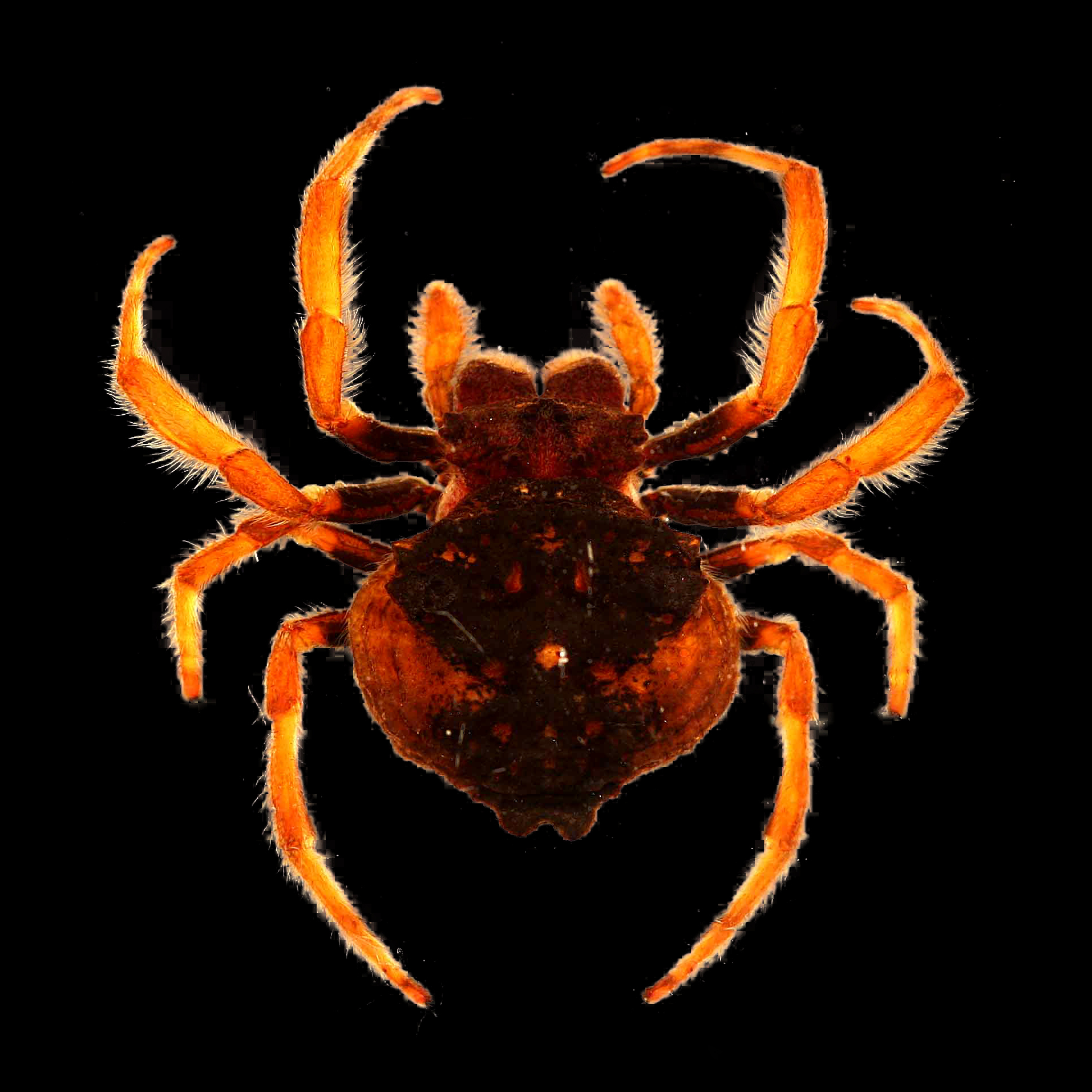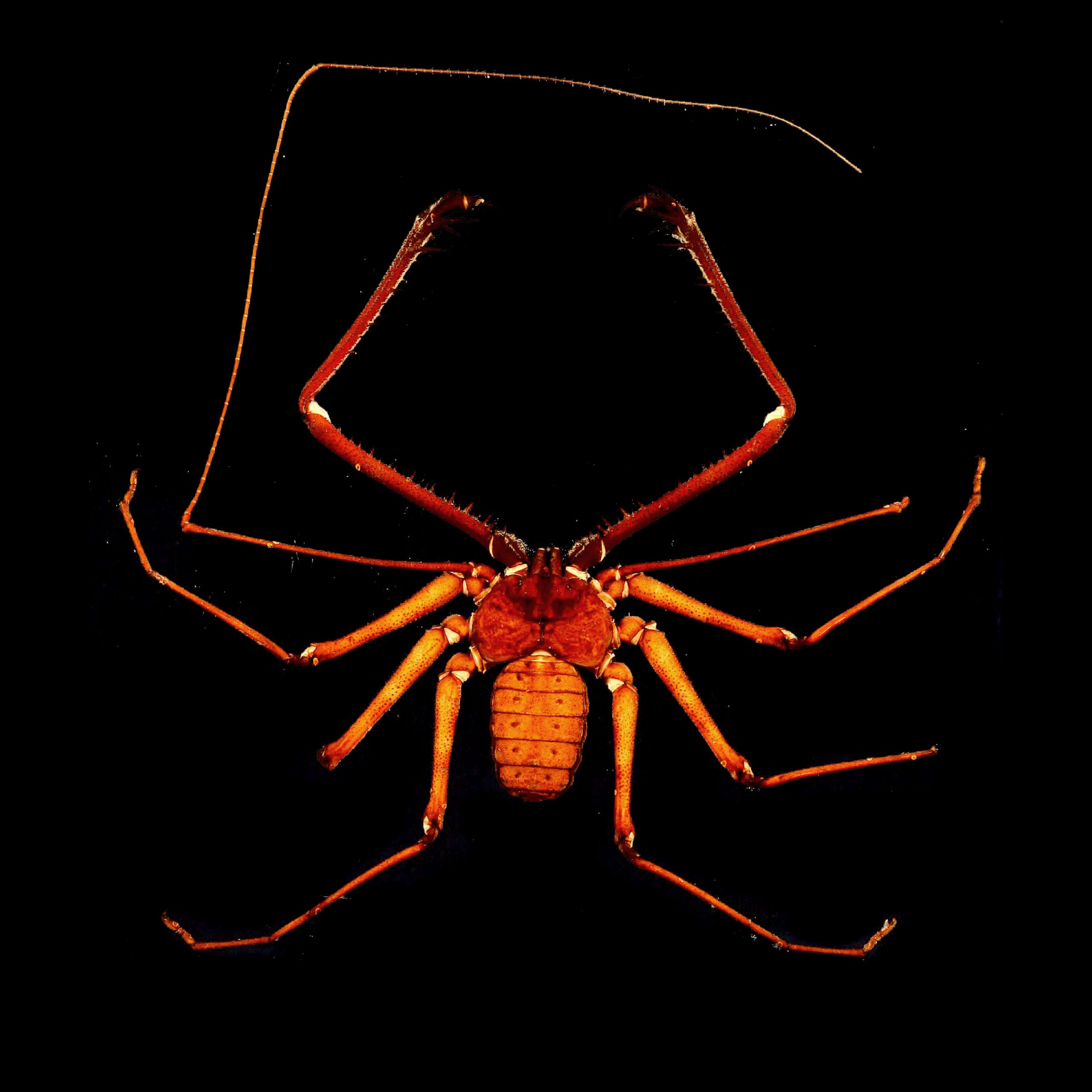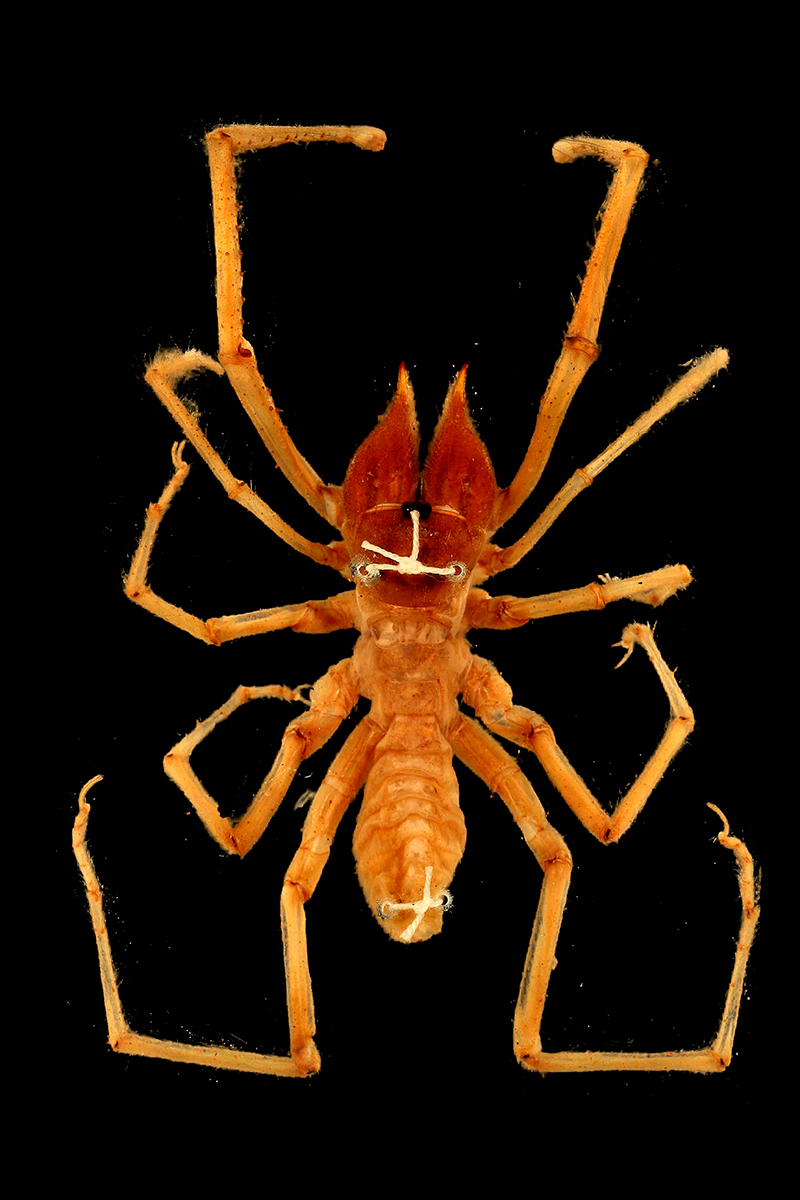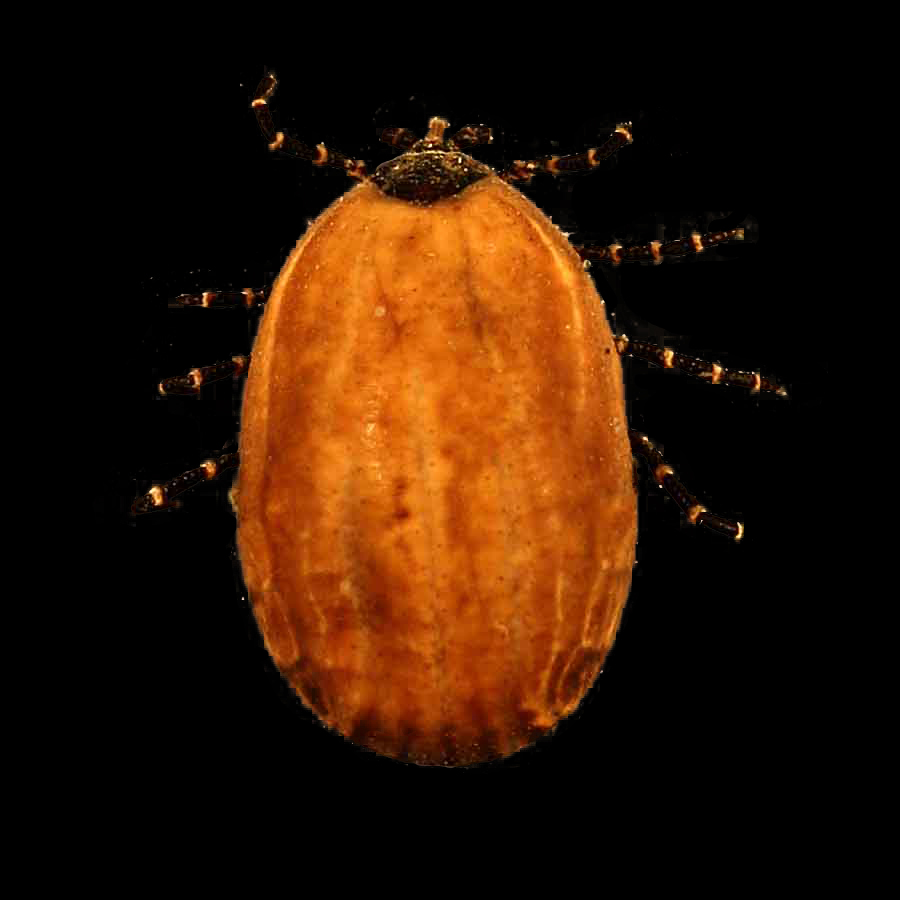The Chelicerates
What are Chelicerates? This is not a commonly known term but you will recognise some of the species – it includes some of your favourite creepy crawlies!

Twig-mimicking Spider Poltys sp. (2758)
Poltys is a genus of orb-weaving spiders, many species of which use camouflage as twigs to hide during the day, weaving webs to catch prey at night. Rather than the legs, it is the abdomen that varies between species to look rough and bark-like – when hiding, the spider will tuck its legs up so the whole animal blends into its background.

Whip Scorpion, Order Amblypygi (2935)
This strange and weird looking creature looks like a cross between a spider, scorpion and crab. Despite their fearsome appearance, whip scorpions do not posses venom glands or a sting, like many of its distant achacnid relatives, and are entirely harmless to humans.
Find out more…
Whip scorpions must rely on the swift action of their hooked front limbs (pedipalps) to capture prey such as lizards, crickets, moths and other arthropods. Having poor eyesight they instead dectect their prey with their highly elongated, sensitive, antennae-like first pair of true legs. These legs can move with such delicacy that if they encounter an insect such as a moth, they may probe it without it even being aware that it has been detected.

Horseshoe Crab Limulus polyphemus (608)
Despite its threatening appearance, the horseshoe crab is harmless, and its long, spike-like tail is not poisonous, as people may think. The crab uses its tail as a lever to right itself when it has been overturned by a wave. Having been around for over 300 million years, horseshoe crabs form an important part of the ecology of the coastal communities they inhabit.
Find out more…
During the nesting season, especially in the Mid-Atlantic States, horseshoe crab eggs become the major food source for migrating birds. Over 50% of the diet of many shorebird species consists of horseshoe crab eggs. In addition, many fish species rely on horseshoe crab eggs for food. Although Limulus polyphemus, the American horseshoe crab, is not yet an endangered species, it is thought to be declining in numbers due to exploitation, habitat loss, and disturbance of egg-laying sites. If the horseshoe crab were to become threatened, this could in turn have serious repercussions for many other animals which rely on its eggs as a primary food source.

Wind Scorpion Galeodes sp. (2143)
Also known as sun spiders, wind scorpions have the largest set of jaws, relative to size, of any animal on Earth. This voracious carnivore uses its jaws to overcome everything from insects, birds and lizards to small mammals and even scorpions.
Find out more…
Despite their common name, most sun spiders are exclusively nocturnal and may die of heat stroke if exposed to direct sunlight. It is actually their Latin name, Solifugae, meaning “fleeing from the sun” from where the common name is derived. Solifugae are the subject of many myths and exaggerations about their size, speed, behaviour, appetite, and lethality. For example, in southern African countries these animals are often feared because some diurnal species appear to chase people. In fact, they are simply following the shadow created by a person, trying to avoid direct exposure to the sun’s heat.

Gigantic Sea Spider Colossendeis proboscidea (418)
This is not a ‘true’ spider but belongs to Pycnogonida, an enigmatic group close to the chelicerates but whose exact taxonomic position is currently unclear.

Tick Hyalomma syriacum (417)
Ticks have several tricks up their mouthparts. In addition to various anticoagulant compounds, they are armed with painkillers that allow them to suck mammal, lizard or bird blood for days without being noticed.
Did you know….. Ticks can only crawl; they cannot jump or fly.